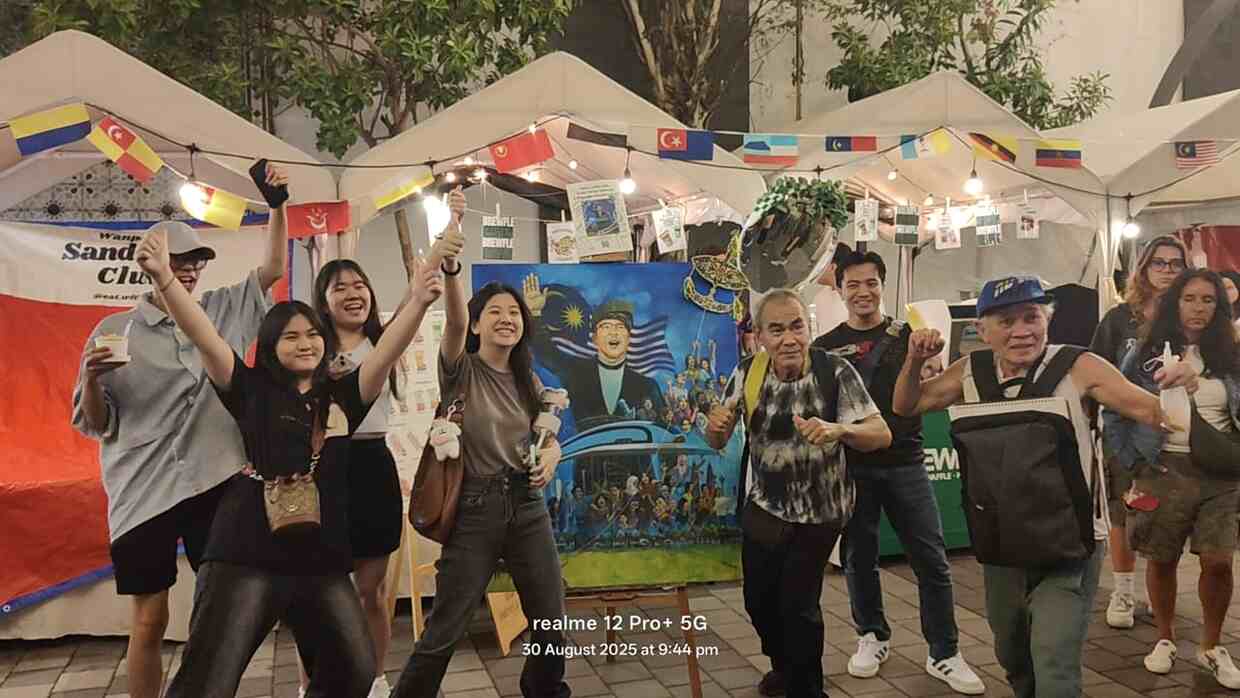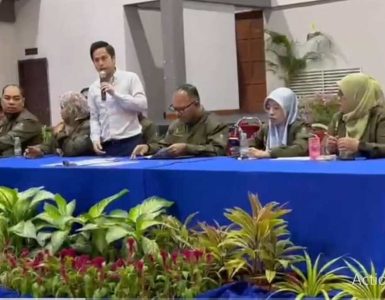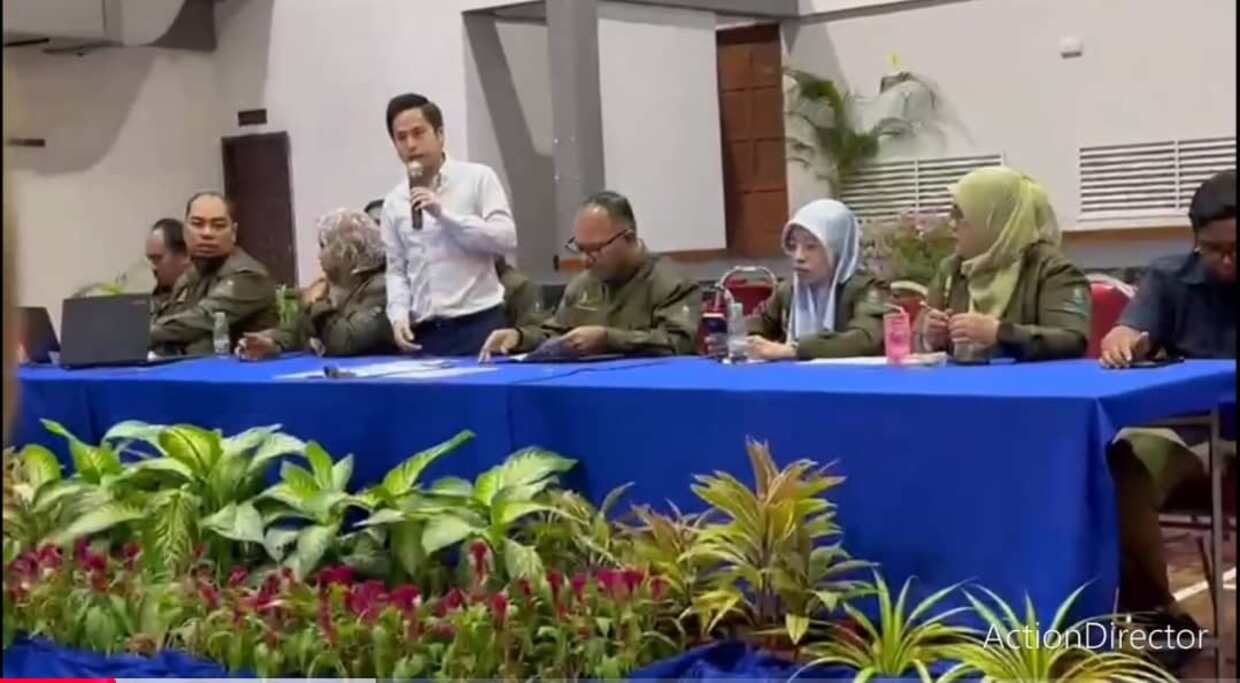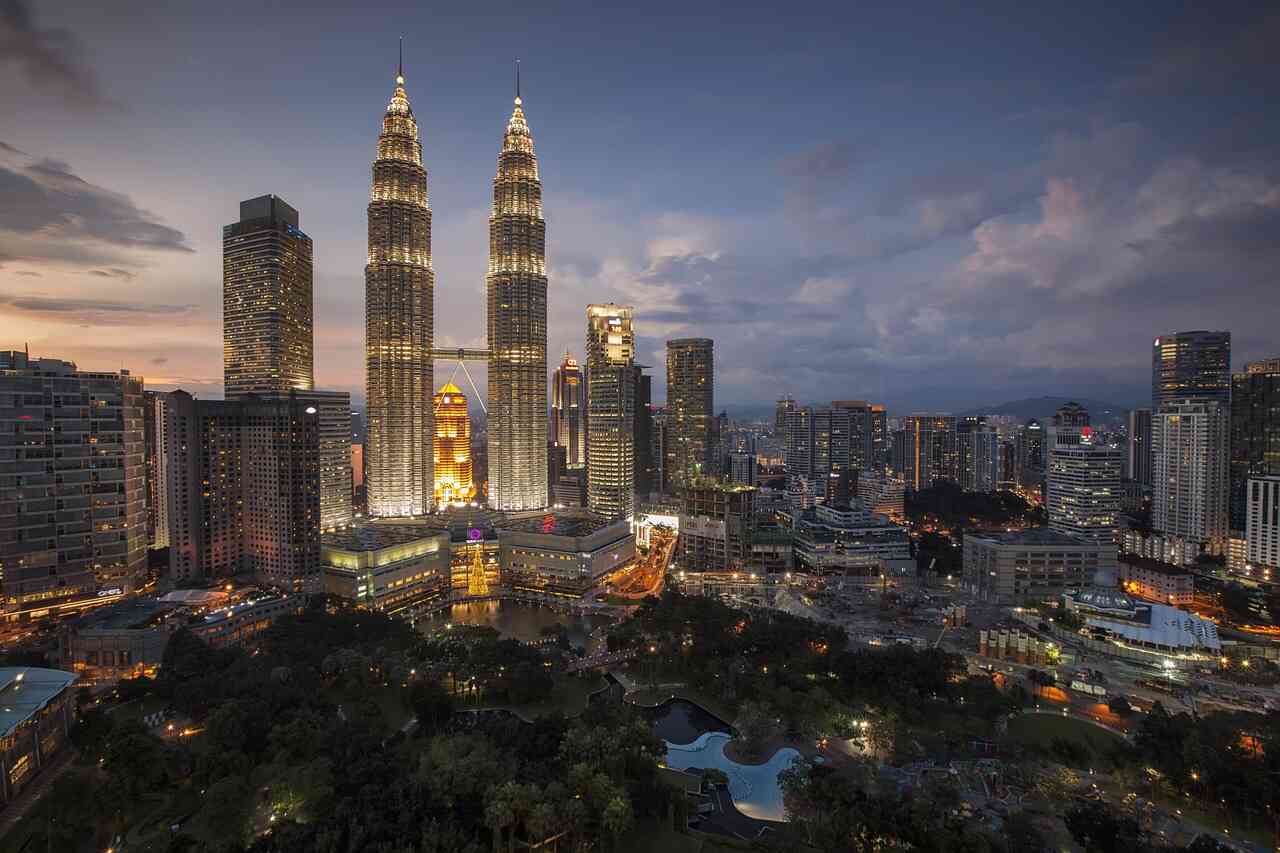On the eve of Merdeka Day, artist Stan Lee—widely recognised in the art world as KULit—embarked on a symbolic journey across Kuala Lumpur, carrying with him a portrait of Tunku Abdul Rahman, Malaysia’s first Prime Minister and the Father of Merdeka. The project, titled Walking With Tunku, was not confined to galleries or exhibitions. Instead, it unfolded on the streets, in restaurants, on the LRT, and finally at Dataran Merdeka, where Malaysians first heard the iconic cry of “Merdeka.”

The 4’ by 3’ canvas portrayed Tunku in a front-facing pose, his right hand extended in a gesture of welcome. Framed around him were depictions of the rakyat, the Sultan Abdul Samad Building, and modern skyscrapers—an interweaving of Malaysia’s past and present. Perhaps most striking was a semi-3D element: a young boy flying a handcrafted kite attached with white raffia string. The boy symbolised the future, a reminder that independence is not only remembered but carried forward by the next generation.
Bringing art to the people
The walk began in Brickfields, where diners at the iconic Sin Kee Restaurant paused from their meals to sketch with the artist, pose for selfies, and share laughter around the painting. From there, Stan boarded the LRT at Plaza Sentral with the portrait in hand, sparking curiosity among passengers. Some shyly observed, while others enthusiastically took photos—each encounter turning a train ride into a moving celebration of Merdeka.

At Pasar Seni and Central Market, the portrait drew larger crowds. Passers-by stopped not only to admire the artwork but to engage with it directly, embodying Stan’s intention for the tribute. By placing Tunku in the heart of the people rather than on a distant pedestal, the painting became a living symbol of unity. Strangers from different backgrounds found common ground in posing beside the nation’s founding father.
A people’s celebration of Merdeka
The journey culminated at Dataran Merdeka, where the painting stood in the shadow of the historic field where Tunku once proclaimed independence. Along the way, Malaysians of all ages—locals and tourists alike—paused to connect with the artwork, affirming that Merdeka is not merely a date on the calendar or a page in history books. It is a spirit carried forward by the rakyat, renewed each time they gather in hope and pride.

For Stan Lee, Walking With Tunku was not just an artistic act but a personal mission to return Merdeka to the people. Known for his five-decade-long creative journey spanning comics, architectural rendering, advertising, urban sketches, and portraits, Stan has long used his art as a medium for social commentary and cultural celebration. His tribute to Tunku Abdul Rahman was both a reminder of the sacrifices of the past and an affirmation that the story of Malaysia continues to be written by its people.
Walking through the streets with the image of Tunku was more than symbolic. It was a moving reminder that the nation’s founding spirit lives wherever Malaysians gather in unity, joy, and shared pride—whether in markets, trains, or beneath the lights of Dataran Merdeka on the eve of the nation’s birthday.












Add comment